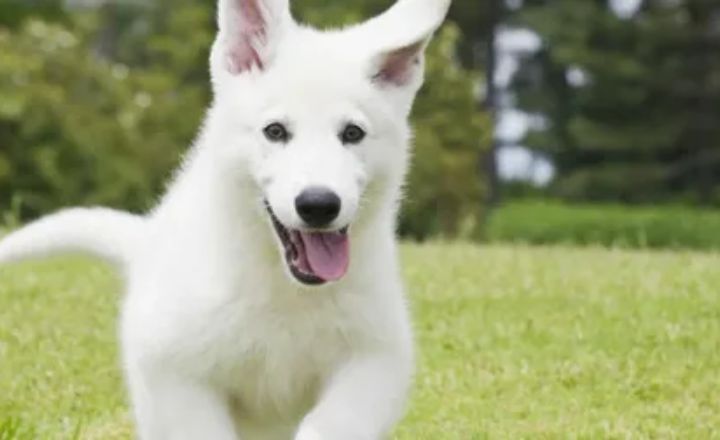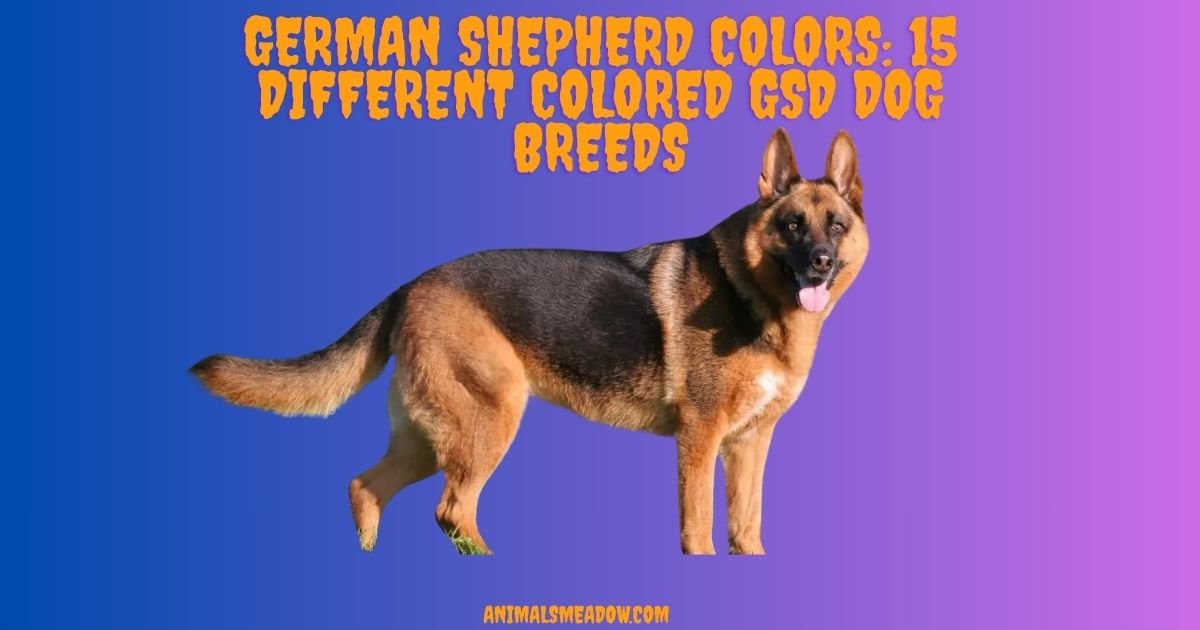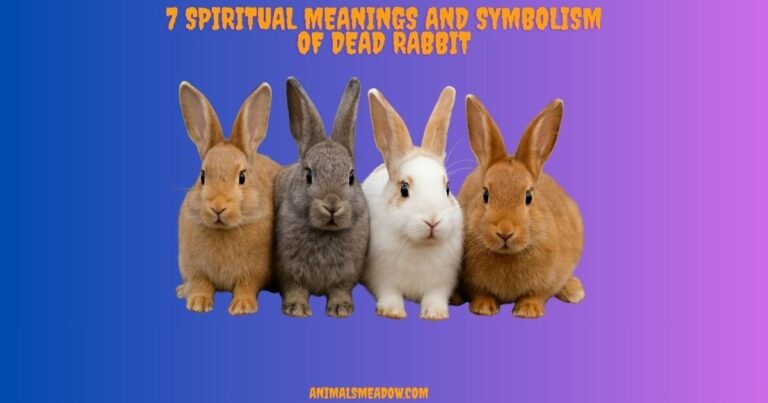German Shepherd Colors: 15 Best Different Colored GSD Dog Breeds
Did you know that German Shepherds come in an array of stunning colors, far beyond the classic black and tan? These versatile dogs not only excel in loyalty and intelligence but also showcase a vibrant spectrum of hues that appeal to every dog lover.
In this article, we’ll explore 15 unique German Shepherd colors, providing insights into their characteristics and significance. Get ready to discover the colorful world of GSDs!
German Shepherd Colors
Here we discuss 15 Different Colored GSD Dog Breeds.
1: Black and Tan German Shepherd
The black and tan German Shepherd stands as a testament to the breed’s storied heritage and enduring popularity. With its striking black mask and rich tan markings, this color combination not only captures attention but also embodies the breed’s strong working lineage.

While rare German Shepherd colors like blue or liver may intrigue enthusiasts, the black and tan variant remains the quintessential representation of the breed’s character and purpose.
Historically, this coloration was favored for its functionality; the dark hues provided camouflage in various environments, enhancing the dog’s utility as a herding and protection animal.
Moreover, the black and tan German Shepherd has become synonymous with loyalty and intelligence, traits that have solidified its place in families and working roles alike.
Beyond aesthetics, these dogs are known for their versatility, excelling in obedience, agility, and search-and-rescue operations.
As more people discover the allure of rare German Shepherd colors, the black and tan variety serves as a grounding reminder of the breed’s origins, an embodiment of strength, resilience, and companionship that continues to thrive in modern society.
2: Pure Black German Shepherd
The allure of the Pure Black German Shepherd lies not only in its striking appearance but also in the fascinating genetics behind its coat color.

While some breeders tout these dogs as rare gems, it’s essential to understand that the American Kennel Club (AKC) recognizes solid black as a standard color for the breed.
This classification means that while you may encounter more black and tan German Shepherds, the solid black variety is simply less common rather than exotic.
The recessive gene responsible for their deep black coat adds an element of mystery to their lineage, hinting at a rich tapestry of ancestry that many enthusiasts find captivating.
Beyond their stunning looks, Pure Black German Shepherds often carry unique traits that set them apart from their more colorful counterparts. For instance, their golden eyes can be a mesmerizing contrast against their ebony fur, drawing admirers into a deeper appreciation of their beauty.
These dogs also exhibit a remarkable versatility; they are just as adept at working roles, such as police or service dogs, as they are in family settings. Their temperament and intelligence remain consistent with the breed’s reputation, making them loyal companions and formidable protectors.
Whether you’re enchanted by their sleek appearance or intrigued by their genetic background, the Pure Black German Shepherd is a breed worth exploring further.
3: Black and Cream German Shepherd
The Black and Cream German Shepherd stands out not only for its striking appearance but also for its exceptional capabilities in various canine sports. Unlike their more common counterparts, these dogs are often overlooked in show rings due to their unique color combination, which can make them a challenge for breeders to perfect.

However, this rarity adds to their charm and appeal, as they showcase a beautiful blend of deep black on their faces and saddles contrasted with a soft cream hue that covers the rest of their bodies.
This visually stunning coat makes them an eye-catching presence whether they’re lounging in the sun or engaging in high energy activities.
Beyond aesthetics, the Black and Cream German Shepherd is renowned for its versatility and intelligence. These dogs excel in agility, obedience, and nose work, proving themselves to be incredibly adept working dogs.
Their natural drive and keen instincts make them well-suited for various roles, from search and rescue to therapy work. As they engage in these activities, they demonstrate that their value extends far beyond showmanship; they embody the essence of what it means to be a true working dog.
For those who appreciate both beauty and functionality, the Black and Cream German Shepherd represents the perfect balance of elegance and performance.
4: Black and Silver German Shepherd
The striking Black and Silver German Shepherd possesses a captivating beauty that sets it apart from its more common counterparts. With their unique color combination, these dogs not only exhibit a wolf-like appearance but also evoke an air of mystery and elegance.

The silver hue, often dominating the body, creates a stunning contrast against the deep black, especially on their faces, which tend to carry a more silvery sheen.
This distinct coloration not only enhances their aesthetic appeal but also gives them an almost regal presence as they move through their environment.
In terms of temperament and behavior, Black and Silver German Shepherds are just as remarkable as their appearance suggests.
Known for their intelligence and loyalty, they make excellent companions and working dogs. Their darker coloration can sometimes blend into shadows, emphasizing the need for luminous collars during evening walks.
However, this unique feature should not overshadow their vibrant personality; they thrive on interaction and mental stimulation, making them ideal for active families or individuals. Whether patrolling a yard or playing in the park, the Black and Silver German Shepherd is a breed that captures hearts with both its looks and spirited nature.
Read Also: Top 15 Cheapest Dog Breeds in India
5: Black and Red German Shepherd
The allure of the Black and Red German Shepherd lies not only in its striking appearance but also in its rich genetic background.

These majestic dogs exhibit a captivating contrast between their deep black saddles and the warm reddish brown accents, making them stand out in any setting. This unique coloration is a result of the pheomelanin gene, which plays a crucial role in determining the shades of red within the breed.
Unlike other variations that may rely on recessive genes, the dominance of this gene allows breeders to confidently pursue these stunning color patterns without the complications often associated with genetic traits.
While many may associate German Shepherds primarily with working lines, the Black and Red German Shepherds are often seen gracing show rings or enjoying the comforts of family life.
Their aesthetic appeal is undeniable; even when they’re lounging on the grass, they exude a regal presence that captures hearts. This combination of beauty and temperament makes them not just pets but cherished companions who thrive in a loving environment.
As these dogs continue to gain popularity, they remind us that behind every unique coat color lies a legacy of careful breeding and a deep connection to our beloved canine companions.
6: Gray German Shepherd
The Gray German Shepherd stands out not just for its striking appearance, but also for the unique charm it brings to the breed. While many German Shepherds exhibit the traditional black and tan or sable patterns, the gray variant evokes a sense of wildness reminiscent of its ancestral wolf lineage.

This captivating coat color captures the attention of dog lovers and enthusiasts alike, making them a sought-after choice for those looking to add a touch of the extraordinary to their lives.
Beyond aesthetics, owning a Gray German Shepherd can be an enriching experience. These dogs often possess the same intelligence, loyalty, and versatility that make all German Shepherds exceptional companions and working dogs.
Their unique coloration doesn’t just set them apart visually; it can also influence their temperament and personality traits, often leading to a more distinct character.
As breeders continue to refine their techniques in promoting this beautiful hue, the gray variant is likely to gain even more popularity, ensuring that it remains a cherished member of the German Shepherd family.
7: White German Shepherd
The allure of the White German Shepherd lies not just in its striking appearance but also in its unique heritage.

While the American Kennel Club does not officially recognize this color variation, enthusiasts appreciate the breed for its intelligence, loyalty, and elegance.
The rarity of the White German Shepherd often translates into a higher price tag, but many owners argue that the investment is well worth it for a companion that stands out in both personality and looks.
Contrary to popular belief, a White German Shepherd is not an albino. Albinism in dogs results in a complete lack of pigment, leading to distinctive red or pinkish-blue eyes that can indicate health issues.
In contrast, the White German Shepherd boasts beautiful hazel or golden brown eyes, which reflect its robust health and vitality. This distinction highlights the importance of understanding the breed’s characteristics, ensuring potential owners are well-informed about their choice.
Embracing a White German Shepherd means welcoming a majestic creature into your home, one that embodies all the qualities of a traditional German Shepherd while bringing a touch of rare elegance to your life.
8: Silver German Shepherd
Silver German Shepherds are a unique and captivating variation of the breed, distinguished by their striking coat color that often glimmers in the sunlight. Unlike their grey counterparts, which arise from a dominant gene, silver GSDs possess a recessive gene that modifies the black pigment in their coats, giving them that eye-catching silvery sheen.

This genetic distinction not only makes their breeding more complex but also contributes to their rarity, often leading to higher prices among breeders.
While you might spot a silver sable German Shepherd in the show ring, pure silver GSDs are less frequently seen, primarily due to the breed standards set by organizations like the AKC.
The impression they create can be polarizing; some judges may favor traditional colors over the more unconventional silver. Nonetheless, these dogs possess all the intelligence, loyalty, and versatility that make German Shepherds beloved companions and working dogs.
Their unique appearance is a reminder that even within established breeds, there’s room for diversity and beauty that breaks the mold.
9: Blue German Shepherd
The allure of the Blue German Shepherd lies not only in its striking coat color but also in the complexity surrounding its breeding.

This unique hue emerges from a recessive gene, making it a challenge for breeders to produce healthy puppies that meet this specific genetic requirement. Consequently, the rarity of the Blue German Shepherd contributes significantly to its high price tag, often five to six times that of more common black variations.
While some may mistakenly identify them as Blue Belgian Malinois, the distinct characteristics of the Blue German Shepherd set it apart, showcasing a blend of elegance and strength.
Beyond their captivating appearance, Blue German Shepherds are known for their intelligence and trainability. These dogs thrive on mental stimulation and physical activity, making them excellent companions for active families or individuals looking for a loyal partner.
Their unique color may limit them in conformation shows, but it does not diminish their capabilities in obedience training and working roles.
Embracing a Blue German Shepherd means investing not just in a pet, but in a companion who embodies both beauty and brain, a true testament to the breed’s versatility.
10: Liver German Shepherd
The Liver German Shepherd is not just a color variation; it embodies a unique blend of beauty and rarity that captivates dog lovers. With their striking rich brown coats, these dogs exude a presence that can be both intimidating and alluring.

However, the path to breeding these remarkable animals is fraught with challenges. The liver coloration arises from a recessive gene, necessitating both parents to carry this genetic trait, making each successful breeding a labor of love.
While the American Kennel Club (AKC) does not officially recognize German Shepherds as a standard color, this only enhances their allure among enthusiasts.
The debate surrounding their classification brings forth intriguing discussions about breed standards and the nature of beauty in dogs.
Despite being deemed “faulty” by some, liver GSDs showcase the versatility and depth of the breed, reminding us that true beauty often lies beyond conventional norms.
Whether you are drawn to their stunning appearance or their rarity, the Liver German Shepherd is a testament to the diverse tapestry of canine genetics.
11: Panda German Shepherd
The Panda German Shepherd is a stunning example of how genetic diversity can create extraordinary beauty within purebred lines.

Unlike typical German Shepherds, which are often characterized by their traditional black and tan coats, the Panda GSD boasts a striking appearance with its unique piebald pattern.
This rare color variation is not just visually captivating; it challenges preconceived notions about breed standards and the potential for genetic expression in dogs.
The contrast between the white fur and the bold black markings around their eyes gives these dogs an almost whimsical appearance, reminiscent of their namesake, the panda bear.
Interestingly, the lineage of the Panda German Shepherd reveals much about the complexities of canine genetics.
Born to a mother with pure black fur and a father displaying the classic black and tan coat, this breed variation emerges from a combination of recessive genes that can often surprise breeders.
The fact that there is no direct ancestry of white fur in their lineage adds an intriguing layer to their development, prompting questions about how traits can manifest in unexpected ways.
This uniqueness not only makes the Panda GSD a visual standout but also serves as a reminder of the endless possibilities inherent in dog breeding, inviting enthusiasts and potential owners alike to appreciate this rare gem in the world of German Shepherds.
12: Sable German Shepherd
The Sable German Shepherd stands out not only for its striking appearance but also for the fascinating genetics behind its coloration. The dominant agouti gene plays a pivotal role in creating this captivating coat.

Each hair is tipped with black, which gives the Sable its unique depth and dimension. Depending on the underlying base color, these dogs can exhibit a stunning array of hues, including smoky grays, rich golds, and warm tans.
This variability makes each Sable German Shepherd a one-of-a-kind masterpiece, showcasing nature’s artistry.
Moreover, the Sable color pattern can evoke various emotional responses in those who encounter it.
Many enthusiasts argue that the sable coat embodies an air of elegance and strength, making these dogs not only visually appealing but also symbolically powerful.
This unique coloration can reflect the dog’s personality traits as well, as Sable German Shepherds are often described as confident, intelligent, and protective.
As they move gracefully through their environments, their distinctive coloring draws attention and admiration, making them a favorite among breeders and dog lovers alike.
13: Bi-Color German Shepherd
The Bi-Color German Shepherd stands out in a crowd not just for its striking appearance, but also for its unique genetic makeup.

Unlike the traditional black and tan variety, which features a more balanced distribution of colors, the bi-color variant showcases a predominance of black across its body, with tan markings often limited to specific areas like the face and legs.
This distinctive coloring not only enhances their visual appeal but also sets them apart in terms of breed characteristics, making them a fascinating subject for both dog lovers and breeders alike.
Moreover, the bi-color pattern adds an element of rarity to the breed. While black and tan German Shepherds are widely recognized and commonly seen, the bi-color version is less frequently encountered, lending it an air of exclusivity.
This uniqueness has garnered attention in dog shows, as they are now officially recognized by the American Kennel Club (AKC), paving the way for these dogs to shine on competitive stages.
Their captivating look, combined with the intelligence and loyalty inherent in all German Shepherds, makes the Bi-Color German Shepherd not just a pet but a true companion that stands out in any setting.
14: Albino German Shepherd
The Albino German Shepherd is a fascinating yet often misunderstood variation of the breed. Unlike the traditional white German Shepherd, which is recognized for its striking coat, the albino version is defined by a complete lack of pigmentation.

This unique genetic trait results in a stunning appearance, characterized by soft white fur that contrasts dramatically with their striking pink, blue, or reddish eyes.
These eye colors stem from the absence of melanin and can give the dog an otherworldly, ethereal look, capturing the hearts of dog lovers everywhere.
However, owning an Albino German Shepherd comes with certain responsibilities. Their lack of pigmentation makes them more susceptible to sunburn and skin issues, requiring vigilant care and protection from harsh sunlight.
The health implications extend beyond their exterior; potential owners should be aware of inherited conditions that can affect their overall well-being.
Despite these challenges, the Albino GSD possesses the same loyal and intelligent temperament as its traditionally colored counterparts, making it a loving companion for those willing to embrace their unique needs.
15: Isabella German Shepherd
The Isabella German Shepherd stands out not just for its stunning coloration but also for the story behind its rarity. Bred from a unique combination of recessive genes, this striking variant represents a fascinating intersection of genetics and artistry in canine breeding.

The lilac and grey coat, complemented by a soft light brown or white undercoat, creates a visually captivating appearance that commands attention.
This rare hue is a testament to the intricacies of genetic variation, reminding us that beauty in nature often comes with complexities.
Beyond their stunning looks, Isabella German Shepherds are known for their amiable temperament.
Their eyes, often a mesmerizing bluish or hazel, radiate warmth and friendliness, instantly making them a favorite among dog lovers. These dogs embody the loyalty and intelligence typical of the breed while adding an extra layer of charm with their unique coloring.
It’s important to remember that owning an Isabella German Shepherd is not just about aesthetics; it’s about embracing a rare gem that requires dedicated care and understanding of its distinctive lineage.
As the demand for these extraordinary dogs grows, so does the responsibility to ensure they are bred ethically and sustainably.
Factors to Consider When Choosing a German Shepherd Dog
When considering factors to choose a German Shepherd dog, the nature of the breeder is paramount.
A reputable breeder should not only prioritize the health and temperament of their dogs but also demonstrate transparency about their breeding practices.
Seek breeders who have strong references from previous puppy owners; this not only validates their credibility but also provides insights into the long term satisfaction of their clients.
Consider whether you prefer a male or female; males often exhibit a more dominant personality, while females may be easier to train but can be more independent.
Another crucial factor is to avoid breeders who raise multiple breeds.
Specialization in German Shepherds indicates a deeper understanding of the breed’s unique needs and characteristics, leading to better socialization and healthier puppies.
When you visit potential litters, take your time to test the puppy’s temperament; observe how they interact with their littermates and respond to human interaction.
Resist the urge to take home a puppy on the first day.
Allowing yourself time to connect with the puppy, and making sure it’s the right fit for your lifestyle, can lead to a more harmonious relationship down the road.
Which GSD Color is Right for You?
When choosing the right German Shepherd color for your lifestyle, it’s essential to consider not just aesthetics but also the intended purpose of your canine companion.

For those looking for a working line dog, classic colors like black & tan or black & red are ideal, as they not only embody the breed’s strong heritage but also reflect their resilience and versatility in various roles.
If you’re drawn to a more exotic appearance, colors such as blue or Isabella can set your GSD apart while still maintaining the breed’s integrity.
Family dynamics also play a significant role in color selection.
For households with children, black & tan, white, gray, and liver shades offer a warm, approachable appearance that complements a nurturing environment.
Albino German Shepherds can make excellent indoor pets due to their striking looks and unique temperament, though they may require special care.
Ultimately, the color of your German Shepherd should resonate with your personal style and lifestyle needs while celebrating the breed’s remarkable diversity.
Conclusion
The wide variety of German Shepherd colors offers something for everyone, whether you’re seeking a purebred or a mixed breed companion.
As you embark on the journey to find your perfect GSD puppy, it’s essential to keep your intended purpose in mind; certain colors may be more suitable for specific roles.
By following the advice and pro tips shared in this article, you can navigate the selection process with confidence, ensuring that you choose a responsible breeder who prioritizes the health and temperament of their dogs.
FAQs
How many types of GSD are there?
German Shepherd Dogs (GSDs) are a versatile breed with various types that have been developed for different purposes, leading to at least 19 recognized variations.
What is the rare color GSD?
Lilac German Shepherds are considered a rare color variation of the breed, distinguished by their unique, soft lavender-gray coat. This coloration arises from a combination of the dilution gene and specific recessive genes that affect pigmentation.
What is the GSD color?
GSD, or German Shepherd Dog, color refers to the various coat colors and patterns that this popular breed can exhibit. The most recognized and traditional color is the black and tan combination, which features a rich tan body with distinct black markings on the back, face, and legs.
Which GSD is best?
When considering which German Shepherd Dog (GSD) is best, the West German Working Line is often highly regarded for its exceptional qualities. This line is bred primarily for their working ability, intelligence, and temperament, making them excellent companions for active individuals and families.







